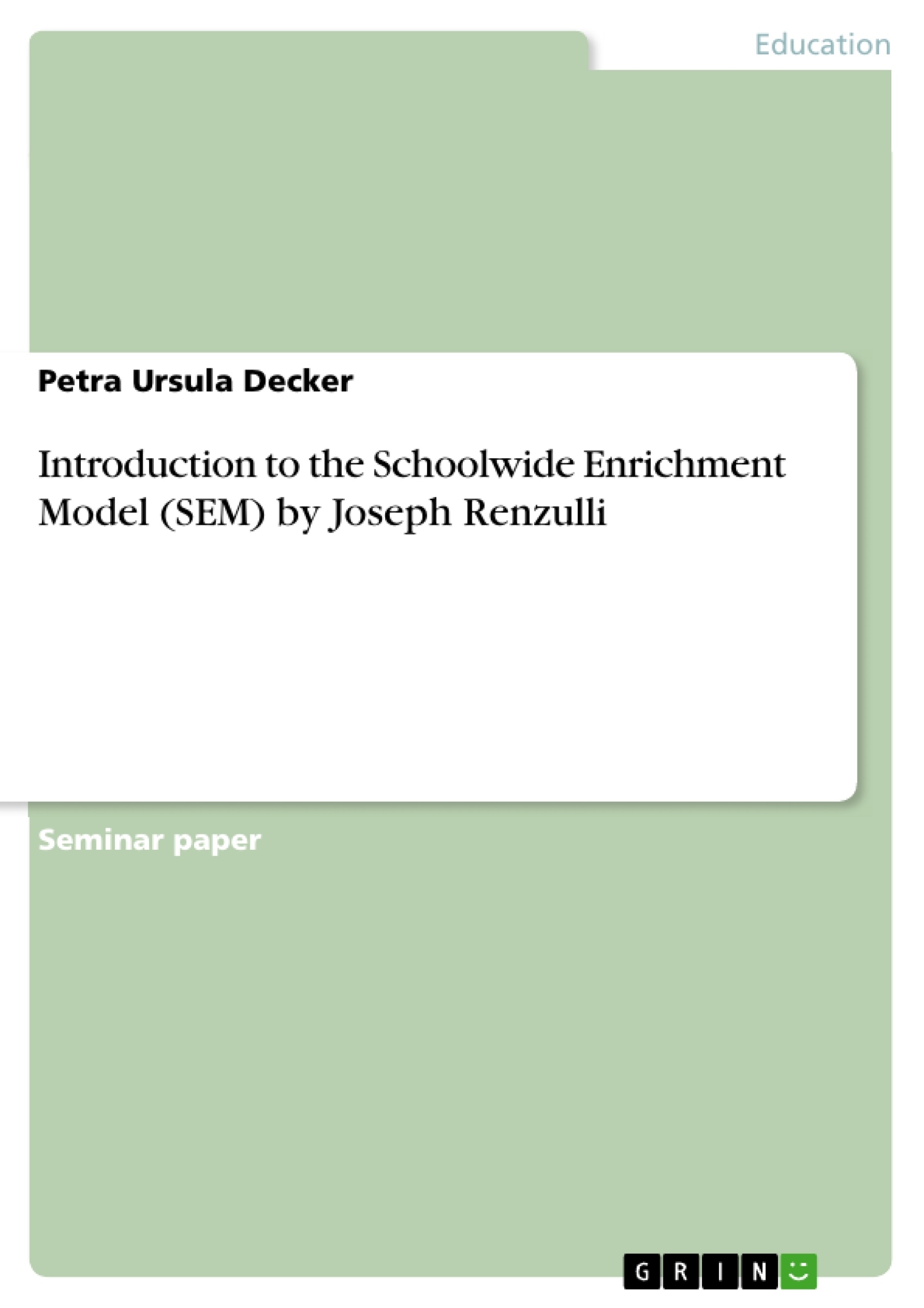This paper is a short introduction to the Schoolwide Enrichment Model, where a Talent Pool of 10 - 15% of above average ability students can be identified as gifted. It is a theoretical model in which educators give students the best support in principles of learning and the recommended practice to achieve their highest individual potential. Creative/productive people need to have a equal interaction among three human traits: above average ability, task commitment, and creativity. Therefore the Enrichment Triad Model was created and it consists of three types of achievement training.
The Schoolwide Enrichment Model, the Three-Ring Conception of Giftedness, the Enrichment Triad Model and the Revolving Door Identification Model will be explained and discussed.
Table of Contents
- The Schoolwide Enrichment Model
- What is a model?
- The Schoolwide Enrichment Model (SEM)
- The Three-Ring Conception of Giftedness
- Above Average Ability
- Task Commitment (a focused form of motivation)
- Creativity
Objectives and Key Themes
This text explores the Schoolwide Enrichment Model (SEM) developed by Joseph S. Renzulli, a theoretical model for identifying and supporting gifted students in a school setting. The text aims to provide a comprehensive overview of the SEM, outlining its theoretical foundation, key principles, and practical implementation.
- The theoretical framework of the SEM
- The Three-Ring Conception of Giftedness and its role in identifying gifted students
- The importance of task commitment and creativity in gifted development
- The implementation of the SEM in schools
- The effectiveness of the SEM in diverse school settings
Chapter Summaries
The text begins by introducing the concept of educational models and differentiating between administrative and theoretical models. It establishes the SEM as a theoretical model built upon assumptions about individual differences in learners, principles of learning, and recommended practices. The SEM emphasizes a "behavioral definition of giftedness" and aims to identify and support a larger pool of potentially gifted students.
The Three-Ring Conception of Giftedness, a core component of the SEM, is then explained. This conception emphasizes the interaction of three traits: above average ability, task commitment, and creativity. Each trait is discussed in detail, highlighting their importance in fostering gifted behavior. The text emphasizes that the interaction of these traits, rather than any single criterion, is crucial for identifying and developing gifted potential.
Keywords
This text focuses on the Schoolwide Enrichment Model, gifted education, talent development, above average ability, task commitment, creativity, Three-Ring Conception of Giftedness, curriculum compacting, Enrichment Triad Model, and the identification and support of gifted students.
- Quote paper
- Petra Ursula Decker (Author), 1998, Introduction to the Schoolwide Enrichment Model (SEM) by Joseph Renzulli, Munich, GRIN Verlag, https://www.grin.com/document/137952



